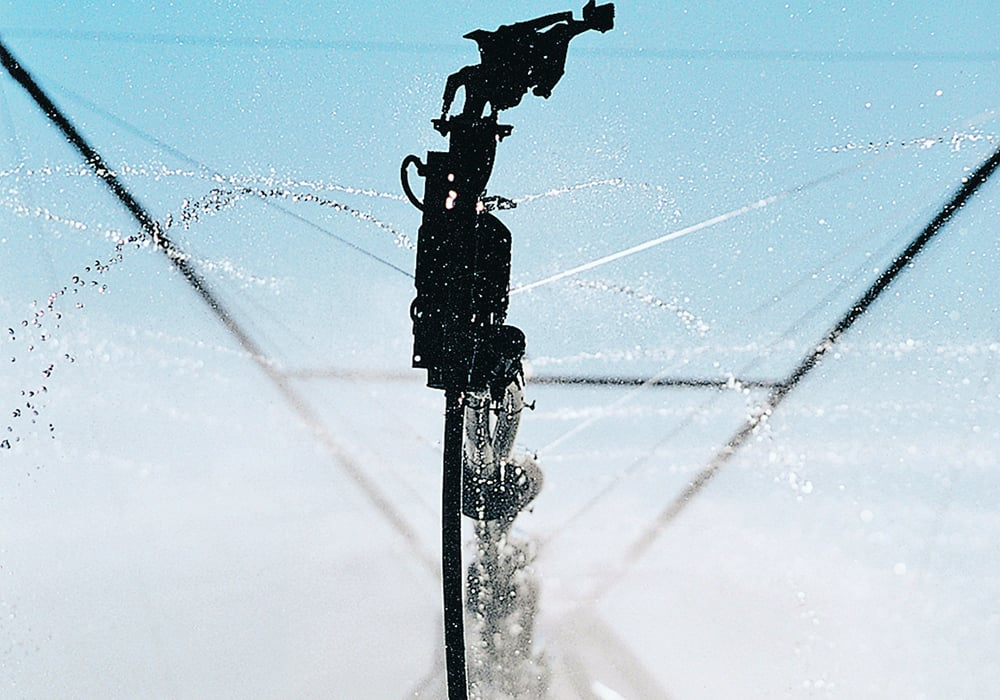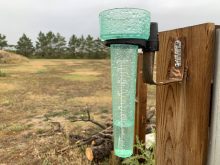Glacier FarmMedia – It’s been a long stretch of dry years for Canadian producers, and they’ve been using more irrigation water as a result.
Statistics Canada reports that farmers in Canada used 23 per cent more water in 2022 compared to 2020. At the same time, Canadians name water as their most important environmental pillar, according to the University of Alberta ag economist Ellen Goddard.
According to her own unpublished research, 49 per cent of Canadian respondents in a 2023 survey ranked water as most important in terms of sustainability of natural resources.
Read Also

Canadian Food Inspection Agency extends chronic wasting disease control program consultation deadline
Date extended for consultation period of changes to CWD program
If that’s the case, how would Canadians respond if the provincial or national drought situation got bad enough that they were asked to make personal sacrifices? If grocery-buying Canadians were constantly reminded about water conservation, would that eventually seep into their priorities as a consumer? If so, what would that mean for food produced under irrigation?
There is scant research on the topic, said Goddard. However, she thinks it will probably be a while before there’s a low-water-footprint revolution.
“I wouldn’t say consumers are saying we should scrap all the foods that require water. We’re not to that stage yet,” she said.
But that doesn’t mean industry should become complacent. Many consumers are more aware of the water footprint of growing crops and cattle than they’re given credit for.
“Are there concerns about water availability? Absolutely. Are people conscious of the fact that certain foods contain more water than other foods or require more water to grow than other foods? Absolutely.”
The best bet would be for the ag industry — and the irrigation sector in particular — to get on top of messaging. Producers would be best served if those customers knew the benefits of irrigation before being directly affected by water shortages.
“(Consumers) are very concerned about what affects them individually,” Goddard said. “If you explained to them that irrigation water was allowing more food to be produced and was keeping food prices down, I think that would be a pretty compelling story for most people.”
It might also be a good idea to look into market opportunities for low water footprint (LWF) foods, should consumer interests start to swing that way.
According to foodprint.org, a non-profit organization dedicated to research and education on food production practices, foods with smaller water footprints include fruits, vegetables, grains, beans and lentils.
Goddard points to a small (760 participants) survey in California in 2017 illustrating the opportunities and limits of producing LWF foods.
The survey, conducted by the universities of Alberta, Delaware and Windsor, asked participants if they were willing to pay for food with a low water footprint during a drought. The answer was yes, but there was a cap on how much.
On average there was an “implied positive willingness” to pay for water efficiency of about 12 cents per gallon of water saved in the production of food.
The researchers then told respondents that the severity of the theoretical drought had increased. Although willingness to pay for LWF foods rose, the difference wasn’t statistically significant, said Goddard.
There’s little to no other research on how North Americans and Europeans would change food consumption behaviours in a water rationing scenario, such as a drought where drinking and bathing water volumes are curbed.
“The bulk of the research done in this area is done in developing countries where access to clean water is more restricted in the first place,” she noted.
A 2022 survey Goddard conducted in Canada asked respondents how much more they would pay for beef if it was produced more sustainably.
“The people with strong environmental attitudes and the people that identified water as one of their most pressing concerns were far more likely to say they would pay more for beef,” she said.
“They personally think water is very important and, when it comes to beef production, they’re willing to pay more if it’s more sustainable, which in their minds also includes water.”
However, when Goddard repeated the survey in 2023, respondents facing inflationary pressure in the grocery aisles weren’t as definitive.
She has no scientific evidence that inflation and high interest rates contributed to a softer position on paying more for beef, but intends to find out through further research.
She suspects that if Canadians had the choice to divert water away from irrigation and toward other industrial uses such as mining, irrigation would undoubtedly win.
“They understand that irrigation is for farming,” said Goddard.
















